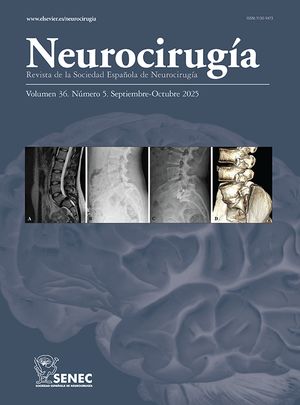De las malformaciones vasculares, las malformaciones arteriovenosas (MAV) intracraneales son las que tienen una mayor repercusión desde el punto de vista clínico. Se pueden manifestar con hemorragia, epilepsia, cefalea, o pueden aparecer en forma incidental durante el abordaje diagnóstico de pacientes con traumatismos o cefalea crónica. Existen tres tipos de tratamientos disponibles: microcirugía, embolización y radiocirugía. El papel actual de la terapia endovascular es como adyuvante como tratamiento previo a microcirugía o a radiocirugía para disminuir el tamaño del nido. La meta final de cualquier tratamiento es la obliteración completa del nido sin causar un nuevo déficit neurológico. El índice general de obliteración por radiocirugía con LINAC es alrededor de 80% y es dependiente de la dosis, del volumen y del tiempo de seguimiento. La dosis promedio publicada en la literatura va de 15 a 25 Gy y la curva de isodosis para conformar la MAV con LINAC es por lo general la del 80%. Puede haber fallo en el tratamiento definido como la necesidad de volver a tratar al paciente después de tres años de seguimiento por falta de obliteración en alrededor del 26% de los pacientes.
Faltan pruebas principalmente a partir de ensayos clínicos, para seguir definiendo el papel de cada una de las modalidades en el tratamiento integral de las MAV.
Among all vascular malformations, the intracranial arteriovenous malformations (AVM's) have the most powerful impact from the clinical point of view. The manifestations include hemorrhage, seizures, headacheh, but sometimes they are incidentally found during the diagnostic approach of patients with head trauma or chronic headache. There are three different types of treatments: microsurgery, endovascular treatment and radiosurgery. The actual role of the endovascular treatment is as an adjuvant therapy before microsurgery or radiosurgery just to diminish the nidus size. The goal of all treatments is complete nidus obliteration without causing a new neurological deficit. The overall obliteration index with LINAC based radiosurgery is about 80% and the result is dose, volume and time dependent. The mean dose reported in the literature fluctuates between 15 and 25 Gy, and the isodose coverage curve for the AVM with LINAC is generally the one of the 80%. There can be a treatment failure defined as the necessity to retreat the patient after three years from the first radiosurgical treatment in about 26% of the patients. There is a lack of evidence, principally from randomized trials, to point out the role of each of the modalities in the treatment of the AVM
Artículo

Si es la primera vez que accede a la web puede obtener sus claves de acceso poniéndose en contacto con Elsevier España en suscripciones@elsevier.com o a través de su teléfono de Atención al Cliente 902 88 87 40 si llama desde territorio español o del +34 932 418 800 (de 9 a 18h., GMT + 1) si lo hace desde el extranjero.
Si ya tiene sus datos de acceso, clique aquí.
Si olvidó su clave de acceso puede recuperarla clicando aquí y seleccionando la opción "He olvidado mi contraseña".







